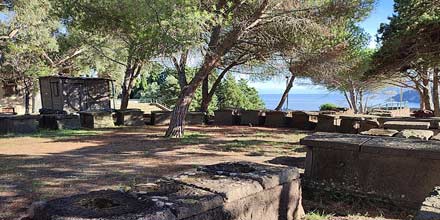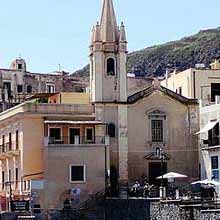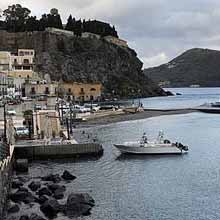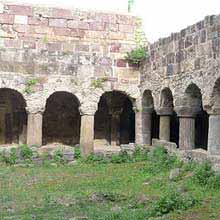Archaeological Park of Diana in Lipari
The Archaeological Park of Contrada Diana in Lipari is located west of the historic center of the modern city, in the Diana district. The entire area of the Park preserves memory of the entire history of the island and has returned evidence of prehistoric age, Greek age and Roman age. In this area there was a vast inhabited area of the Upper Neolithic and the Early Metal Age, on which the Greek and Roman necropolis later came to overlap. There are also the remains of the city walls, to which two thermal complexes are added.
The heart of the Contrada Diana Archaeological Park is the large necropolis in which there are almost three thousand burials. The tombs are arranged in rows and superimposed on several orders: the most recent are located above the older ones. All the burials have the same North-South orientation and are accompanied by an internal and an external kit. The rich grave goods, now kept at the Regional Aeolian Archaeological Museum, were composed of simple and figured ceramics, jewels and metal objects, statuettes and terracotta masks that reproduce characters of Greek and Roman comedy and tragedy.
Inside the area there are also the remains of two city walls, one dating back to the period of the first foundation of the city and the another to the remaking of the mid-fourth century BC. The oldest walls are located under what is now Piazza Luigi Salvatore of Austria and were built with the intention of protecting the Greek settlement, which extended between the Civita hill and the Castle. These are polygonal walls, with large blocks of perfectly hewn lava stone.In Contrada Diana there is the reconstruction of the first half of the 4th century BC. where a new and wider curtain was built that adapted to the expansion of the Greek town. This second curtain provided for the presence of square protection towers and a compact stone filling technique on both faces. In the second half of the 1st century BC, the Romans built a new parallel line of fortification, the Aggere di Sesto Pompeo, an irregularly shaped work made up of dry stone only.
Finally, the thermal complexes in via Mons. Bernardino Re and via Franza. The first complex shows the remains of public spaces, with floor mosaics and drainage channels, dating back to the imperial age. Furthermore, the remains of a horseshoe-shaped basin, the frigidarium, and some adjacent spaces interpreted as tepidarium and calidarium are clearly visible.
The second complex, set in what scholars interpret as a working district, is of modest entity. It appears to be composed of three rooms, equipped with a cocciopesto floor, one of which, due to the presence of the characteristic tile columns under the floor, has been recognized as a calidarium. This second spa building dates back to the late imperial age.



